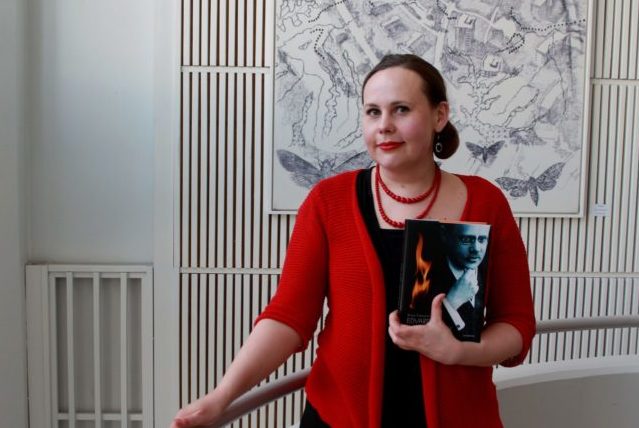Introduction
The Finnish Integration law is directed at supporting immigrants’ active participation in society, at supporting equality and interaction of different population groups with each other (Laki Kotoutumisen Edistämisestä 1386/2010). In this paper, I will show that in fact this support is mainly oriented at assistance in finding employment and language learning. This rather narrow approach neglects very essential part of integration process which comes after the start of employment. Employment is often regarded as one of the most significant factors of integration (Borkert & Bosswick, 2007; Maxwell, 2017, p. 233), however, it may not be sufficient for full integration of immigrants into the destination society. The Ministry of the Interior defines the concept of integration as such:
Integration means that immigrants adapt themselves to Finnish society and acquire new skills, competences and practices which help them actively participate in the life of their new home country. Some immigrants find it easy to integrate; others need more time and support services – integration measures – to adapt themselves. Some knowledge of Finnish or Swedish, and information about Finnish society are important requirements for integration. (Ministry of the Interior, 2017)
I want to emphasise, that in practice only employment and language acquisition are included in the concept. In my Master Thesis I carried out an ethnographic research of immigrants’ integration at the workplace which showed that this approach is rather reductionist. Using participant observation, I studied how logistics workers at an international company get integrated. This was a case study of a single corporation, the name of which I cannot disclose. I took the case because immigrants, according to the terms of the Ministry of the Interior, are regarded as integrated into Finnish society because they have already found employment and learnt Finnish.
The research questions were:
• How integration proceeds after the start of employment?
• In what context the integration takes place?
• How immigrants and native employees communicate with each other at the workplace?
The first question is answered by the following two. The second question deals with contextual matters of immigrant integration, which included the structure of the corporation, conditions of employment and differences in welfare benefit distribution, which were united by the issue of migrant precariousness. Lastly, I studied how the communication between immigrant- and Finnish groups of employees was structured, by looking at the social boundaries between them.
Workplace precariousness and access to welfare benefits
Studying the issue of precariousness, I found that the logistics department where I did my research comprised of only part-timers. Moreover, the workplace was characterised by a chaotic working schedule (always changing) and night or early morning working shifts. The timetable was also often changed after it had been established and the number of shifts planned varied greatly.
Logistics employees can have one month of about 20 working days and another month of about 10, which seriously affects their income. In the corporation there is often need for additional workforce, which creates an opportunity for part-time workers to increase their income. As a result, workers are living in a constant struggle for work hours and extra income which eliminates the opportunity to plan their futures. Unclear working timetable and the possibility to increase income by taking more shifts create “always available” position that requires immigrants to be highly flexible and be ready to accept any chance extra work in the expense of their own plans.
For Finnish employees this part-time job is most often a secondary occupation which means that 8 out of 10 workers have another job or are students. Immigrants, on the contrary, rely on this logistics position as their primary job, having no other source of income, which clearly distinguishes their predicament.
In addition to this difference between immigrants and Finns, access to welfare benefits was discussed as a context of integration. Finland is a Nordic Welfare State known for high level of social security and equality. It provides vast support for its’ residents through extensive social benefits on health, unemployment, disability coverage and other benefits (Jørgensen & Meret, 2012, pp. 289–292). In Finland, Kela is responsible for all that sort of support that is an independent social security institution with its own administration and finances supervised by the parliament (Kela, 2017a).
The amount of support that can be offered to an immigrant by Kela is determined by the type of residence permit, which makes the position of foreigners very different from Finns. Immigrants have the right to work in Finland if they obtain a residence permit. A permit can be restricted or unlimited depending on type. If a foreigner has moved to Finland for studying, he obtains a student residence permit which has a limitation of 25 working hours per week, and one can be given a fine for exceeding the limit (Finnish Immigration Service, 2017). Other types of residence permit do not have a restriction for hours one can spend working. Temporary residence permit based on work has restriction on what type of work a person can accomplish in Finland. This means that an immigrant is allowed to work in only one professional field which is his current job, which significantly limits his labour mobility.
Finnish Immigration Service writes “those citizens who are living in Finland permanently are covered under the National Health Insurance (NHI) scheme of Finland” (Kela, 2017b). However, those, who are not considered as “permanent” cannot be insured by Kela. Students as well as those with a temporary work contracts do not have the right to reside in Finland permanently, hence they are not included in that scheme. Therefore, the welfare benefit system being exclusive in essence makes the position of temporary immigrants evidently vulnerable (Könönen, 2017, p. 13). Immigrant social rights in Finland are comparable to those in Sweden and stronger than, for instance, in US (Sainsbury, 2012).
The residence-based system in Finland gives permanent residents the access to a wide range of welfare benefits, whereas in US this access is determined by the length of stay. The difference is that in America, the eligibility for benefits is reached after a 10 year-long history of employment in the country, while in Finland all the permanent residents are entitled to them as soon as they get the relevant residence permit. In the US, most of immigrants are permanent settlers and their access to social security is based on the employment status and payment of social security taxes, similar to the native population. The health insurance is usually provided by employers which distinguishes this system from Finland, where the public social security is more developed. Although the studies show that immigrants have less access to social security benefits provided by employers than the natives, this regime puts foreigners to a relatively equal position with the majority population. (Sainsbury, 2006, pp. 231–235.)
This welfare model, commonly identified as liberal (Esping-Andersen, 2015), has been assessed in literature to be more effective in terms of immigrant labour market integration (Sainsbury, 2006). The gap between the immigrants’ and natives’ participation in the labour market is significantly smaller than in the Nordic welfare regimes. Thus in the US the unemployment rate among the foreign born population is lower than among those born in America (Sainsbury, 2006). While in Finland the share of unemployed immigrants is twice as big as that of Finns (OECD Data, 2018).
Gøsta Esping-Andersen (2015) in a study of the effects of the welfare regimes on social stratification and the inter-generational transmission of social class, showed that the social democratic regimes of Scandinavian countries managed to equalise their opportunity structure more effectively in comparison to liberal (such as the US) and conservative (for example, Germany) welfare regimes. The “democratization of education system and female emancipation” (Esping-Andersen, 2015, p. 125) as a consequence lead to the increased chance of the upward mobility for citizens through generations. This makes more favourable circumstances for immigrants to integrate into the society. Despite these advantages and the relatively high immigrant social rights, I am claiming, that the Finnish welfare system failed to be inclusive as it differentiates foreigners on the basis of residence (Könönen, 2017). This puts a large part of foreign born population that are living on temporary conditions to a very precarious position.
Boundary making
I was studying the research question on immigrant and native employees’ communication by observing the staff canteen at the workplace. There logistics workers spend their breaks and sometimes stayed after work to have a rest and eat. I was doing observational research there, when the entire department came together for breakfast at the canteen. I noticed that their interaction was structured by existing national-linguistic boundaries. I viewed the distant relations of foreign and Finnish colleagues who tended to form two different national-linguistic groups. These groups originate from daily choices of communication partners, from the encounters of each co-worker with one another and their interaction peculiarities.
Boundaries imply structured interaction that defines the social distance between groups (Barth, 1994; Wimmer, 2008). The structured interaction here is the way in which the daily communication within and between groups adheres to certain rules. I see the choice of language as a sort of structured interaction that can be seen as defining the relations between two groups in this company, mainly the Finnish-speaking and English-speaking group.
Existence of these boundaries can manifest implicitly in the interaction between groups, for instance, Finnish worker being reluctant to start a conversation with his foreign colleagues. In the staff restaurant the distant relations of Finnish and immigrant co-workers were more explicitly expressed when a Finnish worker demonstratively stood up from a table where only foreigners were sitting and took another place with a group of Finns. The different behaviours of Finnish workers depend on who they interact with, a Finnish national or with a foreigner, which is an example of how the distance is produced. In addition, I observed that the Finnish co-workers would always group together with other Finnish colleagues, while immigrants affiliated at another table in the canteen, separate from the natives.
Apart from observation of the logistics department, I also studied if the communication among the departments have similar tendencies. This merited attention due to the fact that the logistics department was called “the most immigrant department” at the interview with the HR manager. It means that the share of workers with a foreign background is higher in this unit of the corporation than in any other (sales, for instance). After the observation I concluded, that in an informal atmosphere, the departments scarcely interact with each other, regardless of the fact that some individuals know each other well and communicate at work. This shows that there is not only a difficulty of communication inside the replenishment part of logistics, which is segregated between English and Finnish speaking people, but there is also little communication between the departments. Those tendencies keep the immigrant group detached and separated from the Finnish part of the same department, as well as from other Finnish speaking departments.
In general, observation has shown that immigrant employees are having communication difficulties with Finnish nationals and have a detached and segregated position in the corporation. This affects dramatically their social integration in the corporation, as well as in society as a whole. In the context of economic and social precariousness, full participation in society could hardly be achieved.
Several recommendations for the N. Corporation were elaborated to improve the communication of the personnel and to stabilise the immigrant position. Different methods of diversity management can be utilised by the human resource manager. In the master thesis I discussed that the uniforms of managers and co-workers within the same department are similar, but they differ among the departments. This helps to diminish the impact of hierarchical structure on the communication inside each unit of corporation and at the same time highlights the distance between them. Thus, to reduce the social distance among departments of the company, the difference between their uniforms should be eliminated or made less apparent. For instance, the collar colour can represent belonging to appropriate department, but not the colour of the whole T-shirt. Having less noticeable uniform difference among the units of the corporation will make them more similar to each other. The difference in status would be less evident not only in the market area where the employees work, but also in the staff restaurant where they can have a rest and communicate with each other. This can enhance the communication among departments of the company.
Another suggestion is that the N. Corporation should consider changing the structure of the logistics department in order to decrease the number of part-timers. Reducing the channels to working time extension would diminish the flexibility requirement for the employees and stabilise their income.
Rethinking the immigrant integration concept
This study was aimed at filling a gap in social science scholarship in the area of qualitative research of immigrant integration at a workplace. Occupation, being a very influential factor in integration, is very often taken for granted as such. The results of this research draw attention to the problem that immigrant incorporation into society is a very complex process that is complicated by many legal, economic and social contextual issues. Even while having a job, the economic participation cannot be called full due to the poor conditions of their employment. Immigrants struggle to render their position more stable by being very flexible and doing overtime work. Apart from that, the communication difficulties are not eliminated, as the boundaries are made at the workplace, which illustrates the poor social participation. According to Elli Heikkilä (2005, p. 486) successful integration is indicated by the rights of immigrants being comparable to that of natives. Immigrants may have very limited or no access to welfare resources.
Many studies of immigrant integration measure it simply by looking at the outcomes, mainly at the socio-economic status, education levels and employment (Crul & Schneider, 2010, p. 1263). This study aims to go beyond this frame and assumes this approach insufficient for full understanding of the issue. Maurice Crul and Jens Schneider (2010, pp. 1261–1263) compared the local and national belonging of second-generation Moroccans in three different cities. They found that the citizenship status (being a crucial legal participation factor) does not determine the identity and belonging significantly. The integrational context was shown to have a major part in this relation. Similarly, to this study, the results of my research underline the importance of social context in research of immigrant integration. Immigrants were shown to be segregated and have communication difficulties, have precarious state in economic sense, and limited access to welfare resources. Hence, language proficiency or employment status alone are not sufficient to describe the level of integration. I claim that the process of immigrant integration is multidimensional phenomenon, which should be studied in relation to its context. In this study, I view the legal regulation context, conditions of employment, and the context of existing boundaries altogether to describe immigrant integration with more insight.
These social cleavages have certain policy implication, which means that the authorities should consider that the employment cannot be the final objective of the governmental integration programmes and policies. Such definition of integration is very narrow. I would argue that Integration should be viewed as multidimensional phenomenon that is largely determined by its context. Contributing to immigrants’ participation level in all its economic, legal, social and cultural levels should be the orientation of immigrant integration policy. Moreover, the immigration law instead of differentiating immigrants on the basis of residency and occupation status should create the bases for equal access to welfare benefits and the labour market.
Nuriiar Safarov, The writer is a recent MA sociology graduate from the University of Helsinki
References
Barth, F. (1994). Enduring and Emerging Issues in the Analysis of Ethnicity. In H. Vermeulen & C. Govers (Eds.), The Antropology of Ethnicity: Beyond “Ethnic Groups and Boundaries” (pp. 11–33). Amsterdam: Het Spinhuis.
Borkert, M., & Bosswick, W. (2007). Migration Policy-Making in Germany: Between National Reluctance and Local Pragmatism? IMISCOE, 20(December), 1–29.
Crul, M., & Schneider, J. (2010). Comparative integration context theory: participation and belonging in new diverse European cities. Ethnic and Racial Studies, 33(7), 1249–1268.
Esping-Andersen, G. (2015). Welfare Regimes and Social Stratification. Journal of European Social Policy, 25(1), 124–134.
Finnish Immigration Service. (2017). Degree from Finland – The Finnish Immigration Service. Retrieved December 12, 2017, from http://www.migri.fi/working_in_finland/an_employee_and_work/degree_from_f inland
Jørgensen, M. B., & Meret, S. (2012). Framing Scandinavian Conceptualizations of Irregular Migration. Nordic Journal of Migration Research, 2(4), 289–297.
Kela. (2017a). About Kela: an independent social security institution. Retrieved December 19, 2017, from http://www.kela.fi/web/en/about-kela
Kela. (2017b). Our Services – Finnish Social Security Agency. Retrieved December 19, 2017, from http://www.kela.fi/web/en/main-page
Könönen, J. (2017). Differential Inclusion of Non-citizens in a Universalistic Welfare State. Citizenship Studies, 1–31.
Laki Kotoutumisen Edistämisestä 1386. (2010). Retrieved December 28, 2017, from https://www.finlex.fi/fi/laki/ajantasa/2010/20101386
Maxwell, R. (2017). Occupations, National Identity, and Immigrant Integration. Comparative Political Studies, 50(2), 232–263.
Ministry of the Interior. (2017). Area of Expertise: Migration. Retrieved December 13, 2017, from http://intermin.fi/en/areas-of-expertise/migration
OECD Data. (2018, June 13). International Migration: Unemployment rate. Retrieved February 24, 2018, from http://www.oecd-ilibrary.org/social-issues-migration-health/international-migration-outlook-2013_migr_outlook-2013-en
Sainsbury, D. (2006). Immigrants’ Social Rights in Comparative Perspective: Welfare regimes, forms of immigration and immigration policy regimes. Journal of European Social Policy, 16(3), 229–244.
Sainsbury, D. (2012). Welfare States and Immigrant Rights. Oxford: Oxford University Press.
Wimmer, A. (2008). Elementary strategies of ethnic boundary making. Ethnic and Racial Studies, 31(6), 1025–1055.



